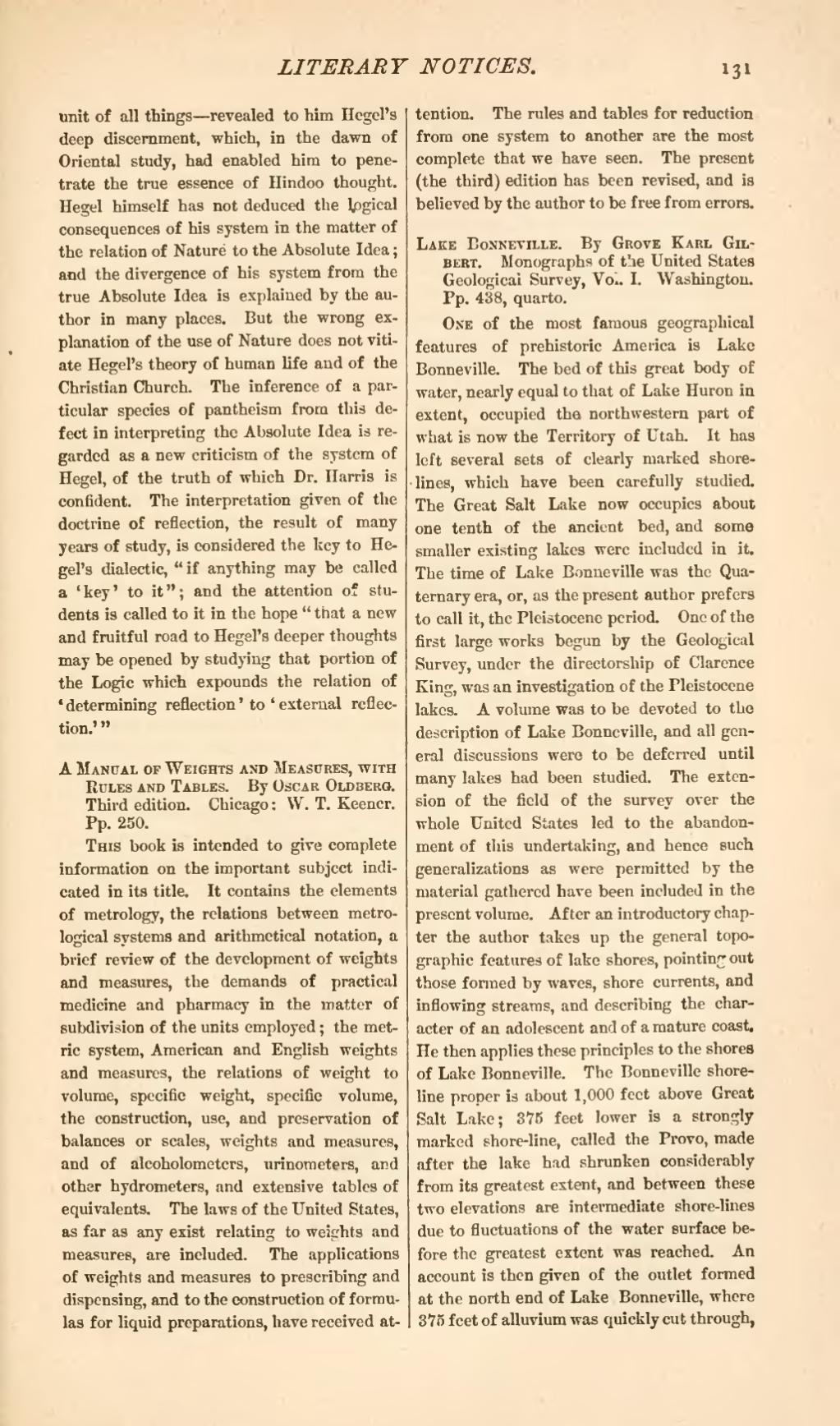unit of all things—revealed to him Hegel's deep discernment, which, in the dawn of Oriental study, had enabled him to penetrate the true essence of Hindoo thought. Hegel himself has not deduced the logical consequences of his system in the matter of the relation of Nature to the Absolute Idea; and the divergence of his system from the true Absolute Idea is explained by the author in many places. But the wrong explanation of the use of Nature does not vitiate Hegel's theory of human life and of the Christian Church. The inference of a particular species of pantheism from this defect in interpreting the Absolute Idea is regarded as a new criticism of the system of Hegel, of the truth of which Dr. Harris is confident. The interpretation given of the doctrine of reflection, the result of many years of study, is considered the key to Hegel's dialectic, "if anything may be called a 'key' to it"; and the attention of students is called to it in the hope "that a new and fruitful road to Hegel's deeper thoughts may be opened by studying that portion of the Logic which expounds the relation of 'determining reflection' to 'external reflection.'"
A Manual of Weights and Measures, with Rules and Tables. By Oscar Oldberg. Third edition. Chicago: W. T. Keener. Pp. 250.
This book is intended to give complete information on the important subject indicated in its title. It contains the elements of metrology, the relations between metrological systems and arithmetical notation, a brief review of the development of weights and measures, the demands of practical medicine and pharmacy in the matter of subdivision of the units employed; the metric system, American and English weights and measures, the relations of weight to volume, specific weight, specific volume, the construction, use, and preservation of balances or scales, weights and measures, and of alcoholometers, urinometers, and other hydrometers, and extensive tables of equivalents. The laws of the United States, as far as any exist relating to weights and measures, are included. The applications of weights and measures to prescribing and dispensing, and to the construction of formulas for liquid preparations, have received attention. The rules and tables for reduction from one system to another are the most complete that we have seen. The present (the third) edition has been revised, and is believed by the author to be free from errors.
Lake Bonneville. By Grove Karl Gilbert. Monographs of the United States Geological Survey, Vol. I. Washington. Pp. 438, quarto.
One of the most famous geographical features of prehistoric America is Lake Bonneville. The bed of this great body of water, nearly equal to that of Lake Huron in extent, occupied the northwestern part of what is now the Territory of Utah. It has left several sets of clearly marked shorelines, which have been carefully studied. The Great Salt Lake now occupies about one tenth of the ancient bed, and some smaller existing lakes were included in it. The time of Lake Bonneville was the Quaternary era, or, as the present author prefers to call it, the Pleistocene period. One of the first large works begun by the Geological Survey, under the directorship of Clarence King, was an investigation of the Pleistocene lakes. A volume was to be devoted to the description of Lake Bonneville, and all general discussions were to be deferred until many lakes had been studied. The extension of the field of the survey over the whole United States led to the abandonment of this undertaking, and hence such generalizations as were permitted by the material gathered have been included in the present volume. After an introductory chapter the author takes up the general topographic features of lake shores, pointing out those formed by waves, shore currents, and inflowing streams, and describing the character of an adolescent and of a mature coast. He then applies these principles to the shores of Lake Bonneville. The Bonneville shoreline proper is about 1,000 feet above Great Salt Lake; 375 feet lower is a strongly marked shore-line, called the Provo, made after the lake had shrunken considerably from its greatest extent, and between these two elevations are intermediate shore-lines due to fluctuations of the water surface before the greatest extent was reached. An account is then given of the outlet formed at the north end of Lake Bonneville, where 375 feet of alluvium was quickly cut through,

